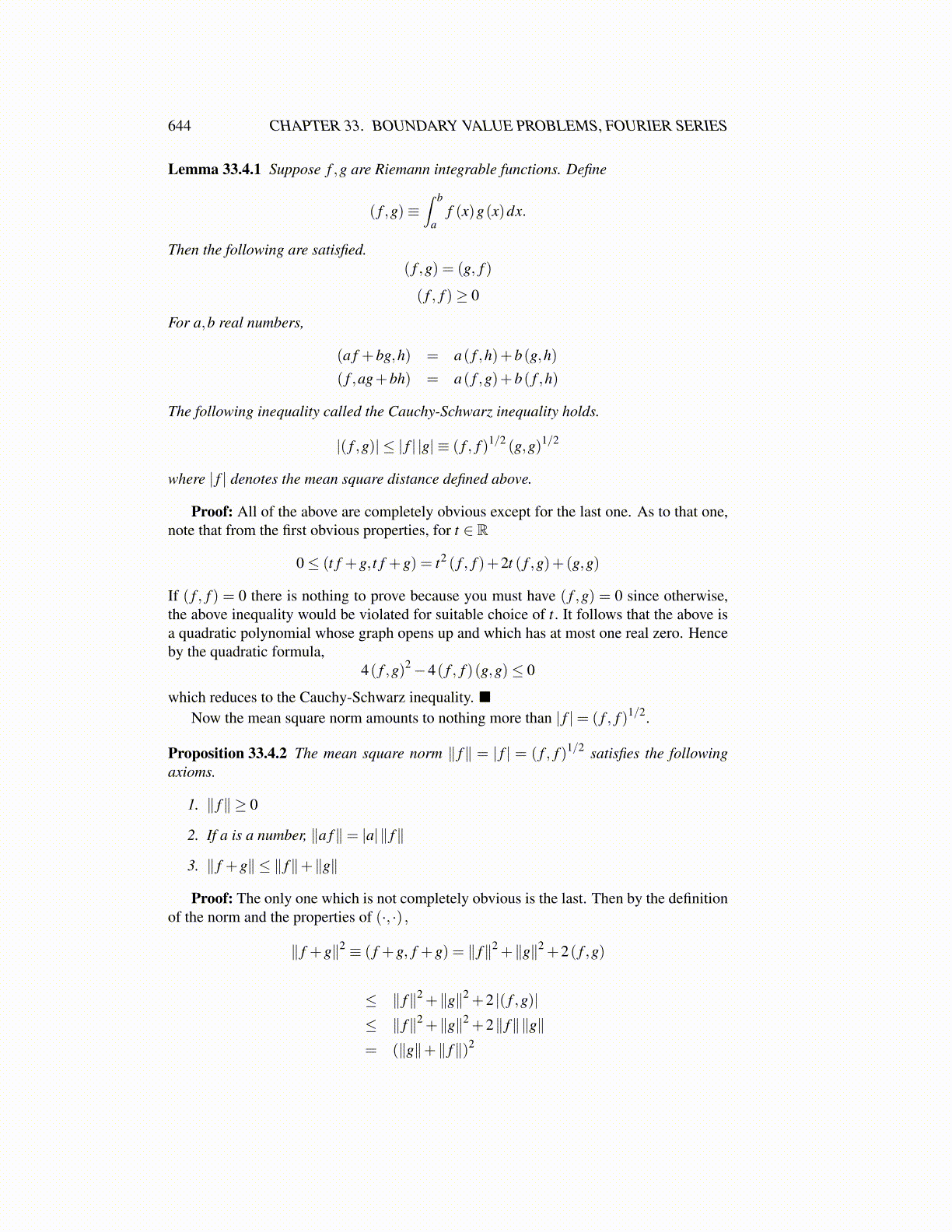
644 CHAPTER 33. BOUNDARY VALUE PROBLEMS, FOURIER SERIES
Lemma 33.4.1 Suppose f ,g are Riemann integrable functions. Define
( f ,g)≡∫ b
af (x)g(x)dx.
Then the following are satisfied.( f ,g) = (g, f )
( f , f )≥ 0
For a,b real numbers,
(a f +bg,h) = a( f ,h)+b(g,h)
( f ,ag+bh) = a( f ,g)+b( f ,h)
The following inequality called the Cauchy-Schwarz inequality holds.
|( f ,g)| ≤ | f | |g| ≡ ( f , f )1/2 (g,g)1/2
where | f | denotes the mean square distance defined above.
Proof: All of the above are completely obvious except for the last one. As to that one,note that from the first obvious properties, for t ∈ R
0≤ (t f +g, t f +g) = t2 ( f , f )+2t ( f ,g)+(g,g)
If ( f , f ) = 0 there is nothing to prove because you must have ( f ,g) = 0 since otherwise,the above inequality would be violated for suitable choice of t. It follows that the above isa quadratic polynomial whose graph opens up and which has at most one real zero. Henceby the quadratic formula,
4( f ,g)2−4( f , f )(g,g)≤ 0
which reduces to the Cauchy-Schwarz inequality. ■Now the mean square norm amounts to nothing more than | f |= ( f , f )1/2.
Proposition 33.4.2 The mean square norm ∥ f∥ = | f | = ( f , f )1/2 satisfies the followingaxioms.
1. ∥ f∥ ≥ 0
2. If a is a number, ∥a f∥= |a|∥ f∥
3. ∥ f +g∥ ≤ ∥ f∥+∥g∥
Proof: The only one which is not completely obvious is the last. Then by the definitionof the norm and the properties of (·, ·) ,
∥ f +g∥2 ≡ ( f +g, f +g) = ∥ f∥2 +∥g∥2 +2( f ,g)
≤ ∥ f∥2 +∥g∥2 +2 |( f ,g)|≤ ∥ f∥2 +∥g∥2 +2∥ f∥∥g∥= (∥g∥+∥ f∥)2